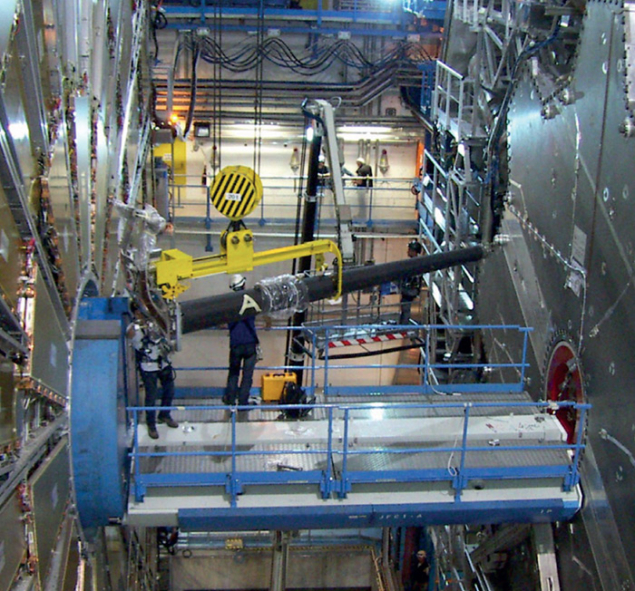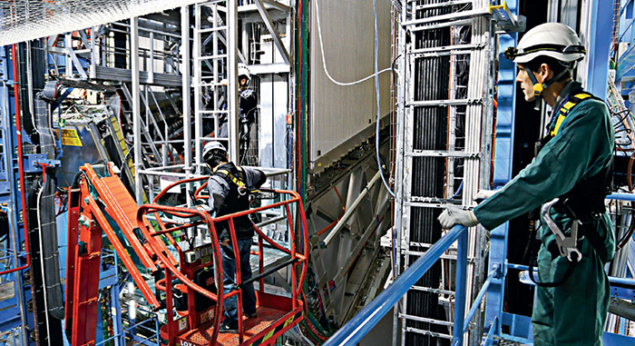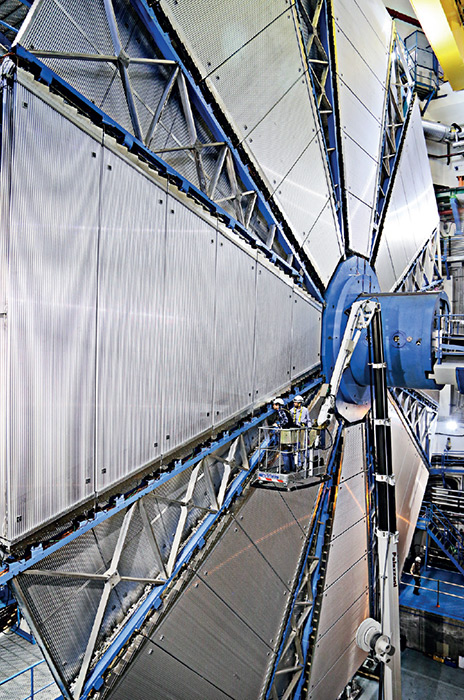Glimpses of the ATLAS experiment during preparation for the LHC’s second run.

A view from the bottom of the ATLAS cavern, up to the LHC beam pipe as the experiment prepares for Run 2 of the LHC at full energy.

Construction of new panels of the pixel detector. The pixel detector is the innermost of ATLAS’s many layers, lying closest to the interaction point where particle collisions occur.

View of the ATLAS calorimeters from below as they were being moved to their final position before the detector closed for the LHC’s second run. Calorimeters measure energy carried by neutral and charged particles.

The ATLAS team watches as the first part of the Insertable B-Layer (IBL), a new component of the pixel subdetector, enters its support tube. The IBL was installed in May 2014, becoming the innermost layer of ATLAS’s inner detector region. It will provide an additional point for tracking particles. An additional point closer to the collision vertex significantly improves precision.

An ATLAS member vacuums the different sectors inside the 7000 tonne detector. Before the toroid magnets can be turned on for tests, the detector must be thoroughly cleaned. In December 2014, 110 ATLAS members worked in 10 different shifts for five days, cleaning and inspecting the detector and the cavern that houses it, to make sure that no object, however miniscule, may have been left behind during the months of upgrade and maintenance.

A thin gap chamber on one of the big wheels being replaced. The big wheels are the final layer of the muon spectrometer, which identifies muons and measures their momenta as they pass through the ATLAS detector. The muon spectrometer is the outermost component of the 25-m tall and 46-m long ATLAS detector.

ATLAS physicists Vincent Hedberg, left, and Giulio Avoni glue optical fibers for the construction of the LUCID calibration system. LUCID is a detector that will help ATLAS continue to measure luminosity with very high precision during the increased collision rates and increased energy expected in the next LHC Run.

The vacuum group’s team members lead the installation of LUCID and the LHC beam pipe. The beam pipe delivers the proton–proton collisions to the heart of the detector.

Raphaël Vuillermet, the technical co-ordination team’s engineer, supervises the separation of the muon spectrometer’s big wheels from the cavern balcony. There are four moveable big wheels at each end of the ATLAS detector, each measuring 23 m in diameter. The wheels are separated to access the interior of the muon stations to change faulty chambers.

Members of the ATLAS muon team inspect the monitored drift tubes of the muon spectrometer before the shielding that encircles the beam pipe, where collisions occur, is installed. The shielding is designed to maintain the integrity of the beam and to protect the sensitive components of the detector near the beamline.





